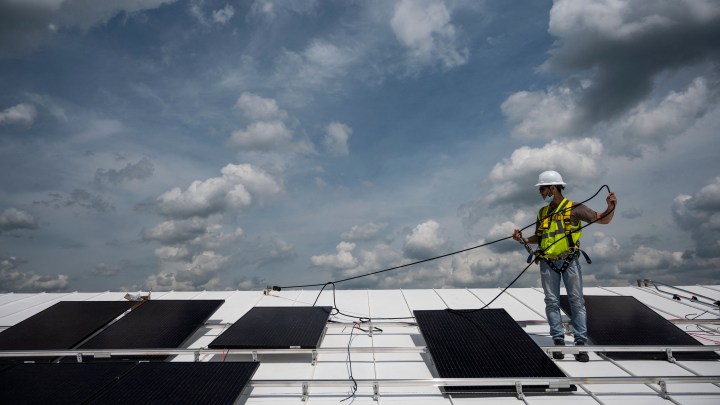
Grid operators struggle with volume of connection requests from renewables
Grid operators struggle with volume of connection requests from renewables

Many solar projects are underway across the country, but getting them all feeding the electricity infrastructure is not easy.
Case in point: PJM, the country’s largest grid operator, which works in 13 states and the District of Columbia. It recently said it’s going to change how it evaluates new applications to connect while it works through a long list.
The backlog presents a threat to President Joe Biden’s clean energy goals.
As costs have fallen for solar and wind power as well as battery storage — and with the help of government incentives and mandates — the number of proposed renewable energy projects has exploded.
It seems everyone wants permission to connect to the grid at the same time. Wait times have crept up to 3½ years, according to research by Joe Rand, senior scientific engineering associate in the electricity markets and policy group at Lawrence Berkeley National Lab.
“The interconnection queue and the interconnection study process has become a major barrier to clean energy projects getting in the ground,” he said.
Part of the problem, per the Solar Energy Industries Association, is just inefficiency.
“Effectively, right now we have a process that is broken,” said Gizelle Wray, who directs regulatory affairs at SEIA. “We see continual back and forth with grid operators. There’s no streamlined process on how to do this.”
And many projects don’t ever make it, Rand said. “Historically, roughly a quarter of these projects get built and reach commercial.”
One of the problems comes down to logistics. For example, if you want to build a solar plant far from a transmission line, the hookup is going to be superexpensive and might get the project denied. Or if you are going to build a wind farm right next to a transmission line, but that line can’t handle any more power, the project will be denied.
You might think that information would be available to developers ahead of time, but Rand said it’s often not.
“To some degree, they might be entering these queues to get some information as to the cost of that interconnection,” he said.
The fact they have to do that suggests that grids are not prepared for the tidal wave of renewable energy coming their way.
“Long-term transmission planning is not adequate,” Rand said.
He and others say grid operators need to get better at planning — planning to expand the grid to make room for renewables and planning to help them connect at all.
There’s a lot happening in the world. Through it all, Marketplace is here for you.
You rely on Marketplace to break down the world’s events and tell you how it affects you in a fact-based, approachable way. We rely on your financial support to keep making that possible.
Your donation today powers the independent journalism that you rely on. For just $5/month, you can help sustain Marketplace so we can keep reporting on the things that matter to you.












